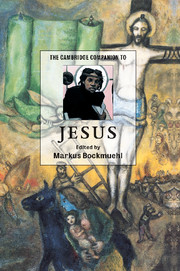7 - Resurrection
from Part I - The Jesus of history
Published online by Cambridge University Press: 28 May 2006
Summary
RESURRECTION AND THE HISTORICAL JESUS
The preceding chapters of this volume have concentrated on Jesus of Nazareth as a first-century Jew - his background and beliefs, his words and works, his disputes and violent demise. Most contemporary Jesus books end here. And yet the striking fact is that without an event that occurred after his death, we would almost certainly have no information of any kind about Jesus of Nazareth. As a leading sceptic recently put it, ‘The story of Jesus after his death is also part of his life, since it is only because of this history that we still know anything about him’ (Lüdemann 2000:692).
Ironically, in the canonical sources the resurrection itself is nowhere described, never clearly defined, and quite diversely interpreted. Nevertheless, the New Testament writings unanimously agree on one thing: in some sense that was both inexplicable and yet unmistakable, Jesus was seen alive in personal encounters with his disciples soon after his death.
Our earliest written sources are Paul’s letters to Thessalonica and Galatia. They date from around ad 50, but evidently appeal to a conviction that is already common ground (1 Thess 1.10; 4.14; Gal 1.1). Writing to Corinth five years later, Paul quotes verbatim from a fuller creedal tradition that may well date from the first decade after the crucifixion: having been dead and buried, Jesus ‘was raised on the third day’ and then ‘appeared’ in succession to Cephas (i.e. Peter), the Twelve, an unspecified group of 500, then to Jesus’ brother James, and then to all the apostles together (1 Cor 15.3–7).
- Type
- Chapter
- Information
- The Cambridge Companion to Jesus , pp. 102 - 118Publisher: Cambridge University PressPrint publication year: 2001
- 3
- Cited by



